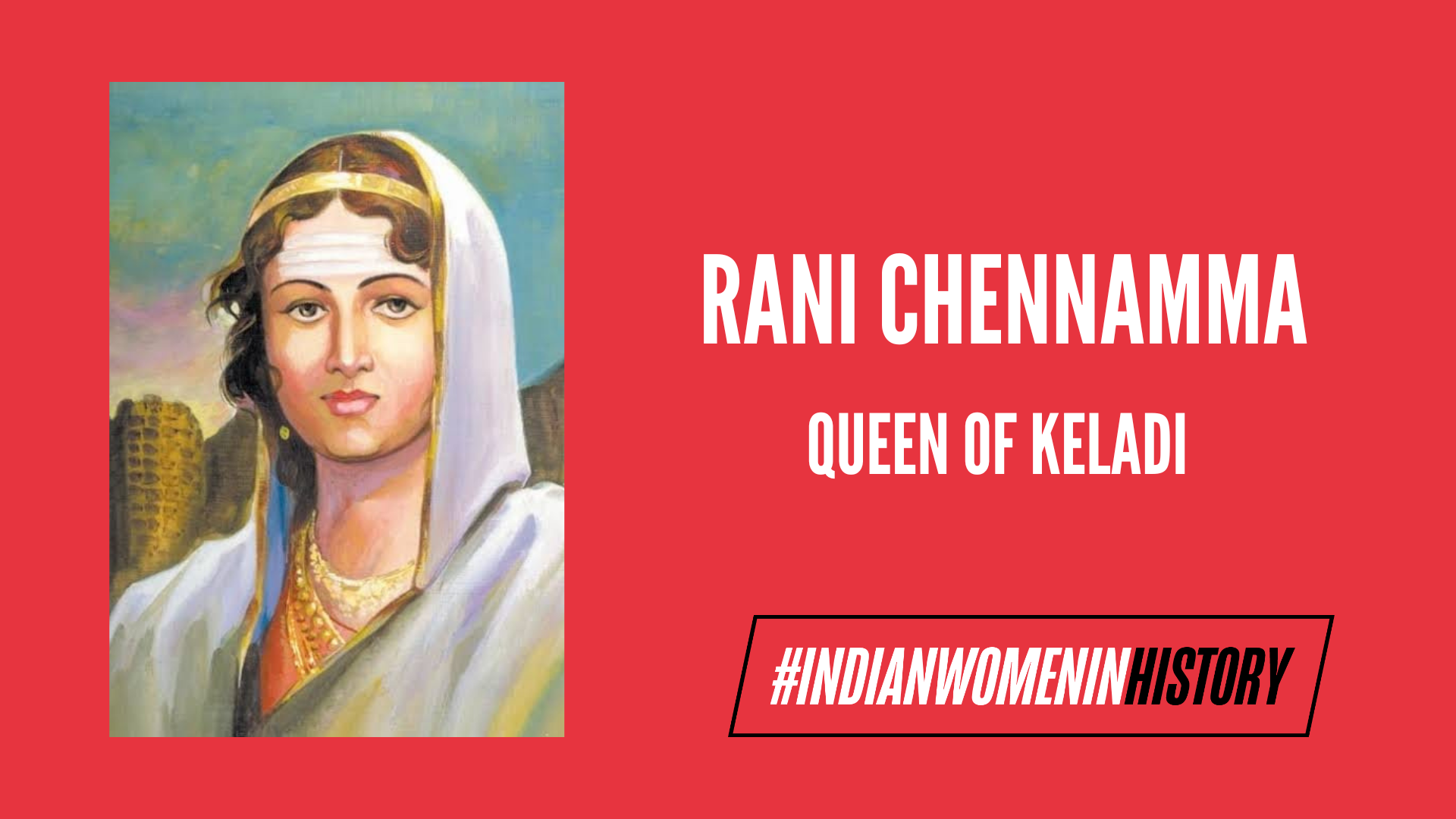The indelible legacies of valiant female readers tend to remain largely unsung within the annals of Indian history. Among these remarkable women is Keladi Chennamma, the Queen Regent of the Keladi Veerashaiva Kingdom of coastal Karnataka. During a period of turbulent political crises, Rani Chennamma emerged as a formidable leader, steering her kingdom with great courage and administrative insight.
Despite her illustrious reign of over 25 years, Keladi Chennamma is often overlooked, remembered primarily through folktales and fictional renditions of her life. Devoted to her people, Chennamma embodied loyalty, kindness, and courage. Today, she is immortalised in nationalist narratives as an icon of Kannada women’s valour. This is her story.
Early life: Rani Keladi Chennamma’s beginnings
Chennamma was born to a Lingayat merchant named Sidappa Shetty in Kundapura of Karnataka. In the 1660s and early 1670s the Ikkeri kingdom, alternatively known as the Keladi kingdom, witnessed several violent succession struggles. It was one such conflict that resulted in the enthronement of Someshakara Nayaka I. Later, the king married Chennamma, making her the Queen of Keladi. In the December of 1671, Somashekara Nayak was murdered by courtiers. Following his death, a period of great terror descended on Keladi.

Disputes began to form across the region, including no less than five claimants to the throne accompanied by their respective factions. As these clashes heightened in intensity, leading to the assassination of several close relatives of King Somashekhara, a military commander named Timmanna emerged as the dominant figure at court. By early 1673, General Timmanna had eliminated all contenders for the throne and successfully installed Rani Chennamma as Keladi’s new monarch.
Even as administrative powers were concentrated in the hands of Timmanna, Chennamma’s political ambitions enabled her to wield significant control over the territory. A report curated by the Dutch after the queen’s death recounts what they deemed a seer politijcque streek, translating to a “very political trick,” employed by Chennamma to solidify her position in the court. When Somashekara died in 1671, custom demanded that the queen, her role as wife transcending every other aspect of her person, perform satī and accompany him on his funeral pyre.
However, Chennamma feigned pregnancy, effectively delaying her death. While the people hoped that she was carrying the future crown prince, Chennamma established alliances with court factions so strong that, once her pregnancy was revealed to be a ruse, it became decidedly impossible to remove her from her ruling position or compel her to perform satī.
Chennamma’s victorious reign
Rani Chennamma ruled over Keladi during a crucial time in the nation’s past. Like elsewhere in India, female monarchs were uncommon in the history of the Vijayanagara Empire and its successor states. The kingdoms of Keladi and Madurai stood out as exceptions, each having no more than two women who ascended to the throne. However, these queens were rarely viewed as rightful rulers, regarded instead as temporary regents until political leadership could be assumed by a male monarch.
In Chennamma’s case, her reign faced significant challenges, particularly from its major facilitator General Timmanna, who began to harbour ambitions of royalty for himself. Timmanna even proclaimed himself as the “Nayaka of Ikkeri,” in an active effort to undermine Chennamma’s authority. Despite Timmanna’s military advances to gain political authority, Chennamma’s hold over the throne remained remarkably steady. Her political power only seemed to increase over the years. Prime among her displays of practical competence is her encounter with the Mughal Army led by Aurangzeb.
In 1680, after the death of Shivaji, Aurangzeb commenced a campaign to seize the Deccan, a region the Mughals had long struggled to control. Following two successful campaigns against Bijapur and Golconda in 1686 and 1687 respectively, Aurangzeb shifted his attention to the Marathas. He captured King Sambhaji and expanded Mughal influence across Maratha strongholds. In the wake of Sambhaji’s death, Rajaram, Shivaji’s younger son and now crowned king of the Marathas, sought refuge in the fortress of Jinji. It was during his attempt to evade capture that Rajaram entered Keladi disguised as a Lingayat pilgrim. Rani Chennamma, bound by her rajadharma, her royal code of conduct, agreed to provide shelter to Sambhaji’s fugitive son despite opposition from the ministers of her court.
Aurangazeb, informed of Rajaram’s presence in Keladi launched an attack on the kingdom. However, Chennamma successfully repelled the Mughal threat in the ensuing battle from her military base in Sagara. Ultimately, Aurangzeb redirected his efforts towards besieging Jinji after news of Rajaram’s successful escape reached the fortress. This strategic move resulted in a temporary peace treaty between the Mughals and Keladi.
Similar accounts of Rani Chennamma’s military prowess also highlight her victory over Chikkadeva Raja of Mysore. Chikkadeva Raja had launched an expansive campaign, capturing numerous territories in northern Mysore which formed parts of the Keladi kingdom. Under the regency of Queen Chennamma,
Keladi’s armed forces mounted an impressive defence. They successfully defeated the Mysore army at Vasudhare, reclaiming the territories of Kadur, Banavara, Hassan, and Belur. This strategic victory not only safeguarded their territory but also enhanced their defences against any future attacks by Chikkadeva Raja.
Rani Chennamma is also remembered for the trade agreement she established with the Portuguese, over spices and commodities such as pepper and rice. Her influence is evident in the naming of Channagiri after her. Additionally, she granted the Portuguese permission to establish churches across various locations in her kingdom, including Mirjan, Honnavara, Chandravara, and Kalyanpura. This alliance with the Portuguese not only facilitated trade but also marked a significant cultural exchange between the two powers.
Basavappa Nayaka and the bounds of female rulership in the 17th Century
Keladi Chennamma, who did not have children from her marriage to Somashekara, adopted Basavappa Nayaka as her designated successor. Shortly after Chennammaji’s ascension to the throne, the young Basavappa was inaugurated as king, frequently referred to as “the Nayaka,” in various documents from the late 1670s and early 1680s. Despite his formal status, Chennammaji remained the central figure in Ikkeri until her death, after which Basavappa assumed sole rulership.
At the time, re-establishing the continuation of the dynasty through male rule was the central objective of the queen. Therefore, in many ways, it was parenting Basavappa Nayaka that helped Chennamma maintain her reigning position. Several political treatises and ancient texts such as Śukranīti and Arthaśāstra either overlooked female contenders when evaluating candidates for the throne or considered them as impermanent alternatives until a male member of royal lineage was available. Although an infant, it was under Basavappa’s name that orders were issued and transactions took place.
In examination of legitimate documentation of Rani Chennamma’s rule, it is strikingly noticeable that her name is occasionally referred to with a few titles, typically including śrīmat, the dynasty’s name Keladi, and honorific suffixes. However, her name always follows that of her deceased husband Somashekara I, emphasising her role as his dharma patniyar āda, or “lawful wife.” Yet, most of these inscriptions, though critical of Chennamma’s rule, undeniably agree that she was at the locus of power as the official ruler of Keladi on all practical counts.
The writings of Basavappa Nayaka reveal another aspect of female rulership. In Basavappa’s narratives, it was not Rani Chennamma, but King Somashekhara I who generously adopted and crowned him as his royal successor. This version of events minimises the queen’s role in safeguarding the Nayaka dynasty and taking control of Keladi through adoption. Even when Basavappa acknowledges Chennammaji’s virtues and wisdom by comparing her to the goddess Mukamba, the divine comparison likely functioned to emphasise her female nature rather than to imply monarchical authority.
Essentially, Chennammaji is depicted as a temporary regent. By doing so, Basavappa sought to establish a direct connection with the previous male ruler, Somashekara I, thereby enhancing his legitimacy over that derived from his immediate predecessor, a female ruler.
Keladi Chennamma in popular media
Today, Chennamma’s image has multiplied in nationalistic significance. Positioned among other glorious Kannada women, she serves as an allegory for courage, honour and conviction. Several renditions of her story are circulated in popular media, each significantly different from the other. For instance, her willingness to harbour Rajaram is now considered an act of Hindu solidarity against a perceived Muslim threat. These contemporary perspectives also indicate issues of gender perception evident in varied accounts of her marriage with Somashekara depicting him as either mad, ill, or infidel, while Chennamma is consistently portrayed as helpless yet gracious in the situation.
Ultimately, Rani Chennamma is celebrated for her wisdom, tact and bravery. Books and articles have praised her long and just rule over Keladi, often commending her unmatched political stability during a particularly tumultuous period. Chennamma is commemorated in popular media such as Amar Chitra Katha comics, specifically in its “Bravehearts” subseries. This children’s book, as well as several Kannada folk songs, principally commemorate her for the protection of Rajaram.
Moreover, recent years have witnessed tributes to Chennammaji, including a Kannada historical TV series called “Keladi Chennamma” dedicated to depicting her life. More than four centuries after her death, a scheme was inaugurated to award bravery to children who demonstrate exceptional courage.
It was called the “Keladi Chennamma Bravery Award.”
About the author(s)
Gayathri S (she/her) is currently pursuing her master's in English. With a deep-rooted love for literature and writing, she hopes to streamline her interests towards a career in journalism. Alongside her studies, Gayathri has gained practical experience through internships in content writing, editing, and research. These opportunities have strengthened her commitment to impactful storytelling and managing projects aligned with broader social goals. Gayathri looks forward to merging her passion for writing with journalism, where she can explore and report on diverse narratives.





